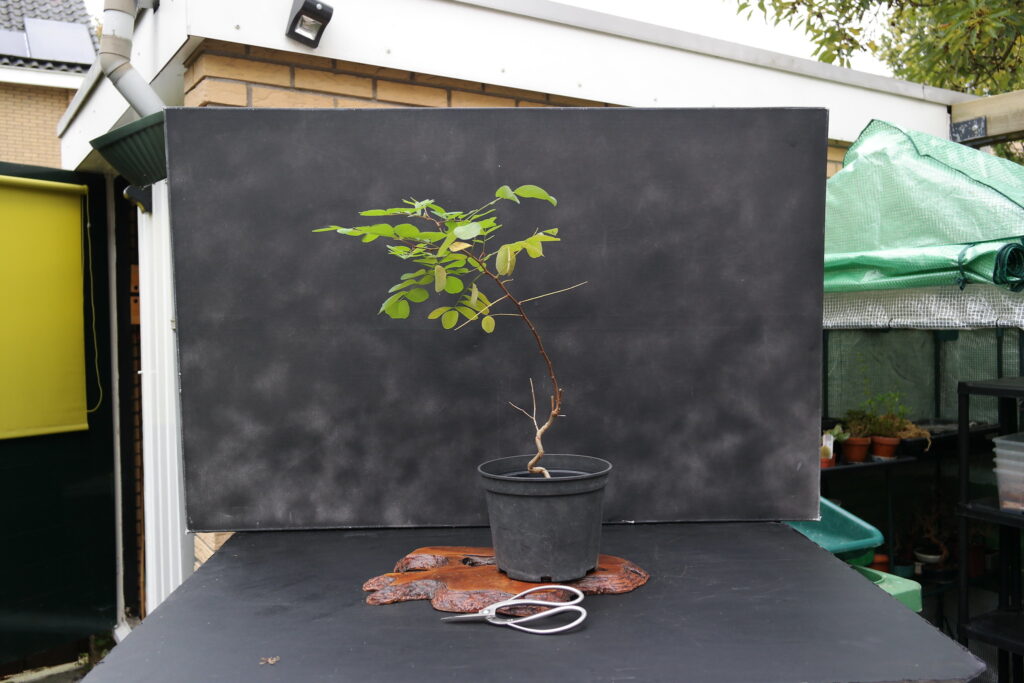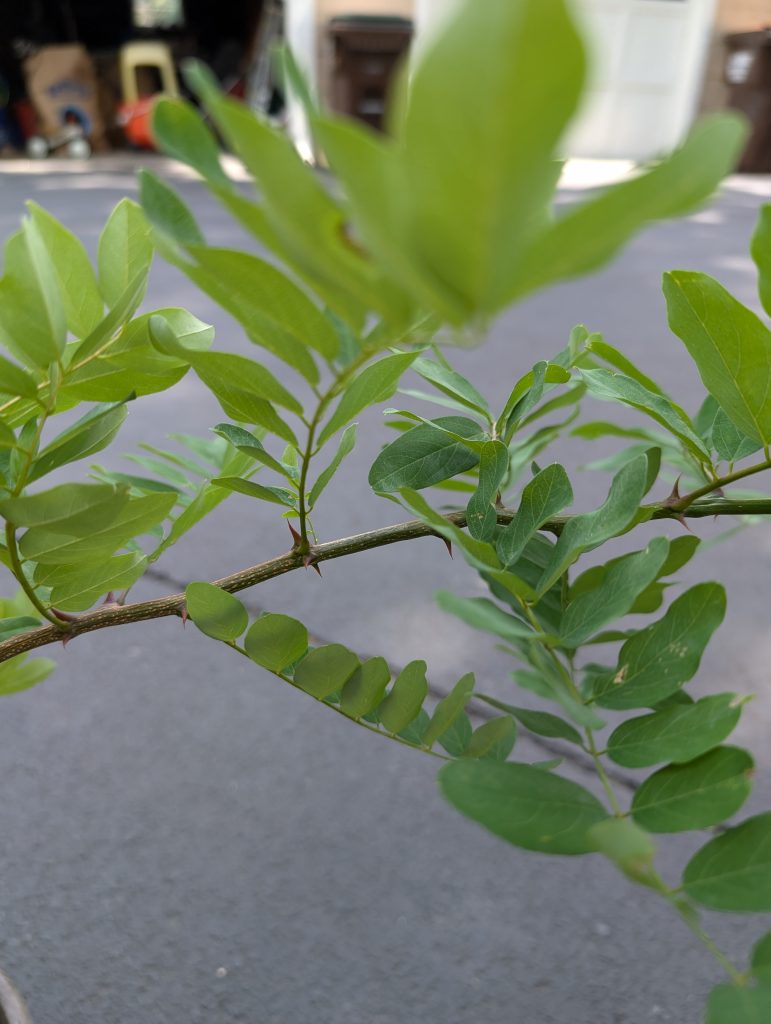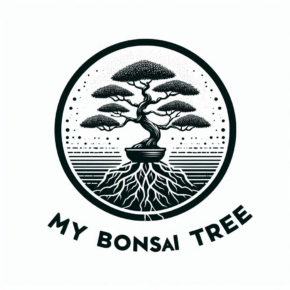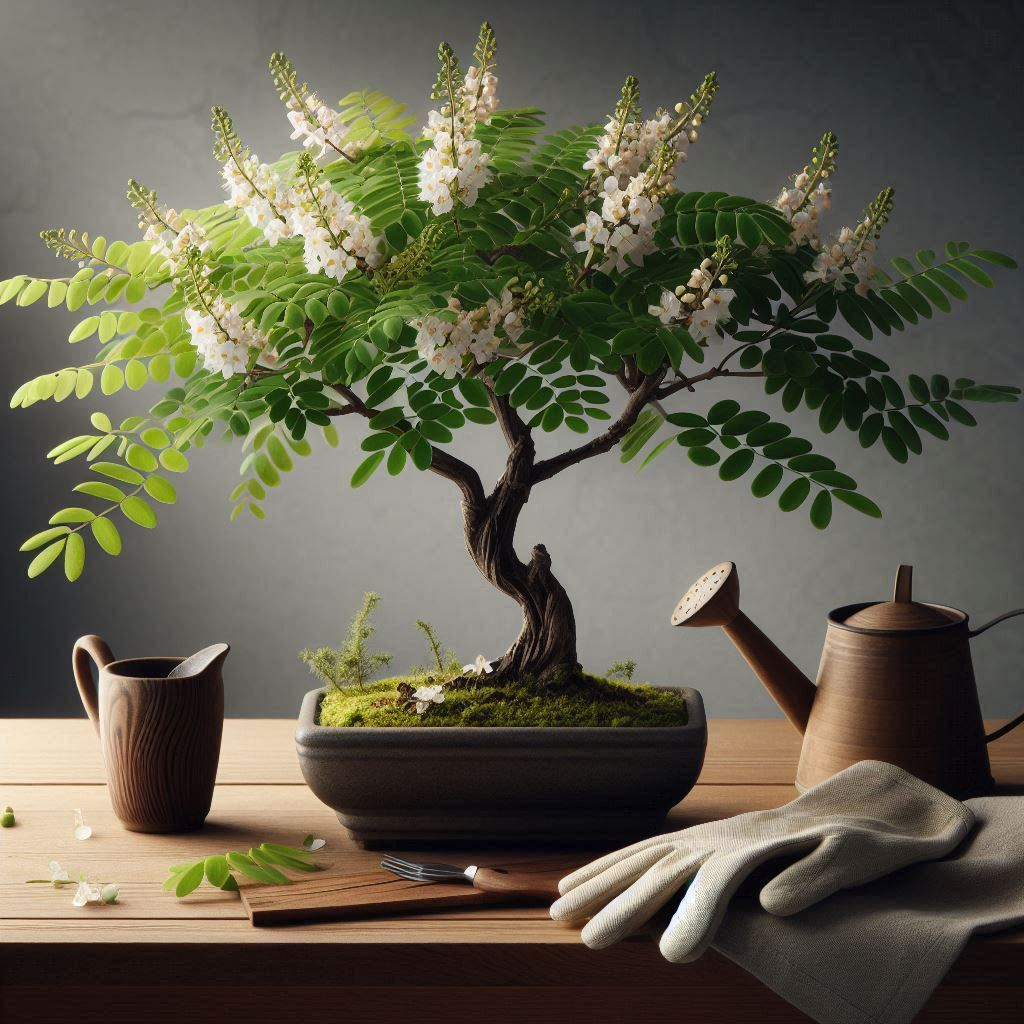- Black Locust Overview
- Tree #1 – Noire
- Tab 3
Sorry for the AI image. I don’t have a “mature” Black Locust (Robinia pseudoacacia) bonsai tree yet, though I do have three saplings planted in pots. I will update their progress throughout their lives on the separate tabs on this page. See the menu above this text to see them.
There are not a lot of shining examples of Black Locust bonsai trees online, but that is not stopping me from trying out the species. I’ve put together a list of pros and cons to Black Locust bonsai while researching how to grow them.
Beneficial Characteristics of Black Locust for Bonsai
Rapid Growth – Black locust trees are known for their rapid growth (up to 4 feet per year), particularly in their early years. In nature, this makes them useful for erosion control and as a pioneer species in reforestation.
Unique Coloring– Black locust leaves turn a homogenous yellow color in the fall, resulting in a beautiful foliage display.
Drought-resistant – Black locust trees are highly tolerant of poor soils and drought conditions. They can thrive in a variety of environments, including dry, sandy, or rocky soils where other trees may struggle.
Durable wood– The wood of the black locust is extremely hard, dense, and resistant to rot and pests. This makes it highly valuable for use in fencing, furniture, and outdoor structures.
Despite this durability, young black locust shoots are fairly pliable and wireable for bonsai training.
Rugged and furrowed bark: The bark of a black locust is thick, deeply furrowed, and grayish-brown. It often has a rough, ridged appearance, which becomes more pronounced with age.
Nitrogen Fixer– As part of the legume family, Black locusts are “nitrogen fixers.” They can fix nitrogen in the soil through a symbiotic relationship with root bacteria. This allows them to improve soil fertility.
For bonsai, this should not be as important as in nature (because there are no other plants in the pot). It is still a good idea to fertilize a black locust bonsai, but the ideal makeup of the fertilizer may be different than what other deciduous trees prefer.

Challenging Characteristics of Black Locust for Bonsai
Root Suckers –Black locust trees reproduce prodigiously via root suckers (as well as sexually via their flowers). In nature, this characteristic can quickly lead thick forests.
In bonsai development, these suckers need to be promptly removed. Leaving suckers on the root system of the main tree will greatly reduce the vigor of the bonsai and could eventually lead to its death.
Compound Leaves –Black locust trees have pinnately compound leaves, meaning each leaf is composed of multiple small leaflets arranged along a central stem. A single leaf can have anywhere from 7 to 19 oval-shaped leaflets.
Compound leaves are more prone to die back when pruned than simple leaves. When pruning a new tree, cut further out than desired to account for die back. As you get to know how the tree responds, cuts can be more aggressive.
Many bonsai creators have problems reducing compound leaves to a small enough size to create a realistic design. There are some species, like the Brazilian Rain Tree, that do exhibit very fine leaf size reduction.
Thorns – Black locust trees naturally have sizable thorns, especially when young. Mature trees may lose their thorns altogether. A poster on this forum writes that buds are often located with the thorns, so removing the thorn could damage the bud and end all hope of new growth originating from the spot.

A poster on this forum says that removing thorns can reduce flowering. Since Black locust can produce pretty white flowers, this point needs to be considered.
Sensitive Roots?– Black locusts are a member of the legume family. I read an opinion online that you should be careful do major root work on Black locusts. Root work is best performed in late winter/early spring. I repotted my one-year old sapling in late August, doing some minor root work along the way, and it responded well, however.
Add your content here…

